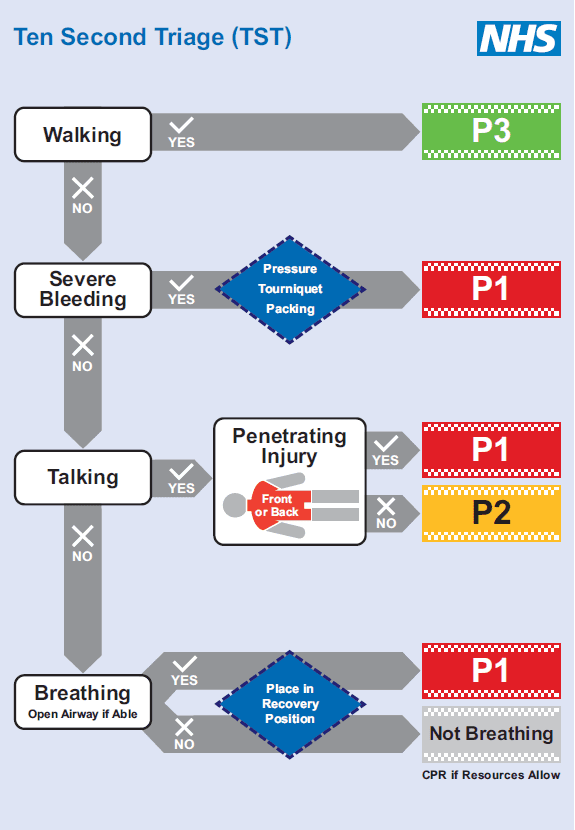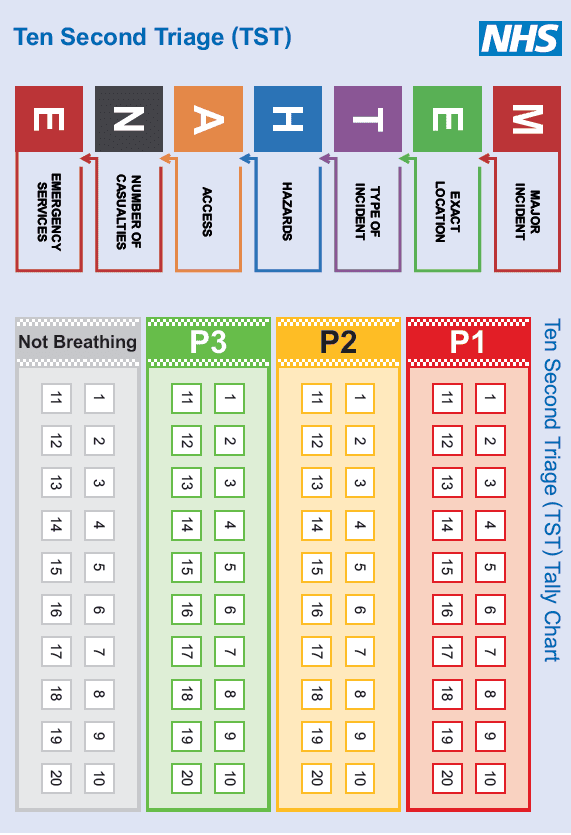At the point when it has been identified that multiple casualties will require treatment, the fire control room should be notified so that the required resources can be mobilised. It may be appropriate to declare a major incident using the JESIP M/ETHANE model.
Fire and rescue services should provide operational personnel with information and equipment to enable them to apply the TST tool if there are multiple casualties.
Ten Second Triage
The TST tool is designed to be quick, simple and effective at prioritising large numbers of casualties. There should be a focus on immediately providing life-saving interventions (LSI), to maximise the survival of casualties in the early stages of injury.
The interventions include:
- Control of severe bleeding, using pressure, tourniquets or packing
- Opening the casualty’s airway
- Placing the casualty in the recovery position
- Providing cardiopulmonary resuscitation (CPR) if resources allow
While principally designed for events where casualty numbers far outweigh the availability of responders, the TST tool is equally effective at any multiple casualty event.

Figure: Diagram showing the Ten Second Triage process

